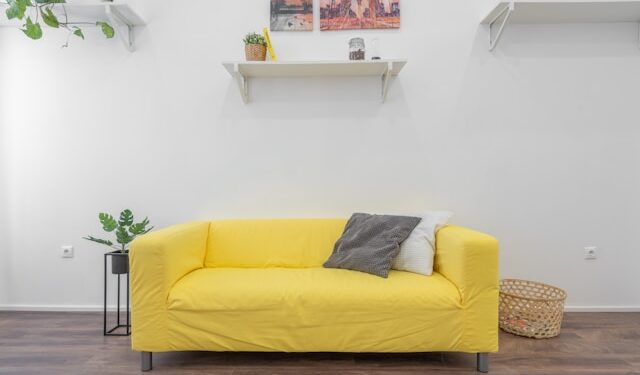Walls take a lot of wear and tear over time, from nail holes left behind by hanging décor to cracks caused by temperature changes or settling. Whether you’re a homeowner preparing to repaint, a renter fixing damage before moving out, or a DIY enthusiast tackling home improvement projects, knowing how to patch holes in walls and fix cracks can save you time and money. In this guide, you’ll learn DIY wall repair techniques for different types of damage, ensuring a smooth, professional finish.
Essential Tools & Materials
Before starting, gather the right tools and materials to make your DIY wall repair job easier and more effective.
Materials:
- Spackling paste (for small holes) or joint compound (for larger holes)
- Drywall patch or mesh tape (for medium to large holes)
- Primer and paint to match your wall color
- Flexible caulk (for cracks)
Tools:
- Putty knife (for applying spackling or joint compound)
- Sandpaper (fine-grit for a smooth finish)
- Utility knife (for cutting damaged drywall if needed)
- Paintbrush or roller (for blending the repaired area)
How to Patch Small Holes (Nail & Screw Holes)
Nail and screw holes are among the easiest types of damage to fix. Here’s how to patch holes in walls quickly and seamlessly:
- Clean the Hole: Remove any loose debris or dust using a dry cloth or brush.
- Apply Spackling Paste: Use a putty knife to press the spackle into the hole, slightly overfilling it.
- Smooth the Surface: Scrape off excess spackle with the putty knife and let it dry according to the manufacturer’s instructions.
- Sand the Area: Once dry, lightly sand the patched area until it’s smooth and flush with the wall.
- Prime and Paint: Apply a coat of primer before painting to ensure even color blending.
Fixing Medium-Sized Holes (Dime to Quarter-Sized)
For slightly larger holes, such as those left by wall anchors, using mesh tape or a self-adhesive patch will help reinforce the repair.
- Cover the Hole: Place a self-adhesive wall patch or mesh tape over the damaged area.
- Apply Joint Compound: Use a putty knife to spread a thin layer of joint compound over the patch, feathering the edges.
- Let It Dry and Repeat: Allow the first layer to dry, then apply a second coat if needed.
- Sand, Prime, and Paint: Sand until smooth, prime the area, and repaint to blend with the surrounding wall.
Repairing Large Holes (Over 2 Inches)
Larger holes require more structural support. Using a drywall patch is the best way to restore the wall’s integrity.
- Cut Out the Damaged Area: Use a utility knife to cut a clean square or rectangle around the hole.
- Insert a Drywall Patch: Cut a new piece of drywall to fit the hole and secure it in place with drywall screws or adhesive.
- Apply Joint Compound and Tape: Cover the seams with drywall tape and spread joint compound over it in thin layers.
- Sand and Smooth: Once dry, sand the patched area until it blends with the wall.
- Prime and Paint: Apply primer before painting to ensure a seamless finish.
How to Repair Wall Cracks Like a Pro
Cracks in walls can be caused by foundation settling, humidity changes, or improper drywall installation. The key to fixing wall cracks is to prevent them from reopening.
- Widen the Crack Slightly: Use a utility knife to create a small groove along the crack.
- Fill with Caulk or Joint Compound: For hairline cracks, use flexible caulk. For deeper cracks, apply joint compound with a putty knife.
- Smooth and Let Dry: Allow the filler to dry completely before sanding.
- Prime and Paint: Finish with primer and paint for a flawless look.
Pro Tips for a Smooth, Seamless Finish
- Avoid over-sanding, as this can create an uneven surface. Use fine-grit sandpaper and sand lightly.
- Match your paint color by taking a small chip from the wall to the paint store for an exact match.
- Use a feathering technique when painting to blend the repaired spot with the rest of the wall.
- Prevent future cracks by using high-quality materials and applying filler properly.
Final Thoughts
Learning how to patch holes in walls and repair wall cracks is an essential skill for any homeowner or renter. With the right materials and techniques, you can achieve a professional-looking repair and maintain your walls in top condition. Whether you’re spackling walls for small fixes or using drywall patches for larger repairs, following these DIY wall repair tips will ensure a seamless, damage-free finish.





